In this post, we will show you how to change the default color, shape and font of a comment box in Excel. Microsoft Excel allows you to add comments to cells within worksheets. These comments could carry a note, an explanation, a question, or feedback for your own reference, or for other users you share the Excel file with. Each comment contains the comment text and the user’s name who has added the comment.

By default, the comments appear in Tahoma font in size 9. However, if you don’t like the default appearance of certain comments, you can change the color and font of the comments to make them more appealing or eye catchy.
How to change default Color, Shape, Font of Comment Box in Excel
In this post, we will show you how to format a comment box in Excel in the following ways:
- Change the default color and font of a Comment Box.
- Change the default shape of a Comment Box.
- Change the user name in a Comment Box.
Let us see this in detail.
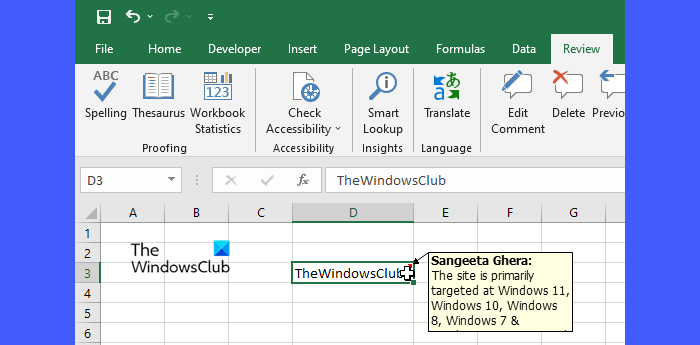
Suppose we have an Excel worksheet in which a comment has been inserted in cell D3, as shown in the above image. As you can see, the comment text appears in black color in size 9 in Tahoma font. And the comment box is rectangular in shape and has a pale yellow background. These are the default format settings of the comment box. However, these can easily be changed in Excel.
1] Change the default color and font of a Comment Box in Excel
Select the cell that has the comment that you want to format. Right-click on it and select Show/Hide Comments.
By default, comments remain hidden in Excel until you hover over the cell. To display the comments, you can select the Show/Hide Comments option from the context menu of the cell. Alternatively, you can click on the Review tab and click on Show/Hide Comment or Show All Comments (to display all comments in the active worksheet) in the Comments section.
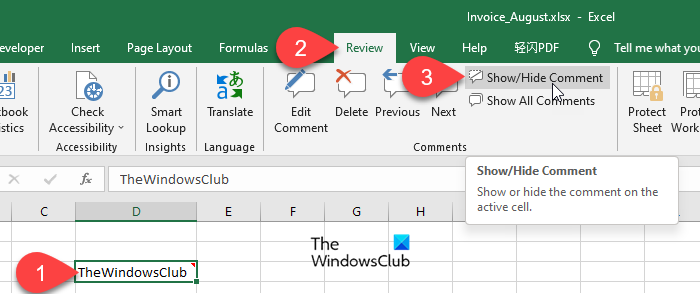
Once the comment becomes visible, click anywhere on it. The entire comment will be selected. You can keep it selected or select part of the comment you want to format.
Then right-click and select the Format Comment option.
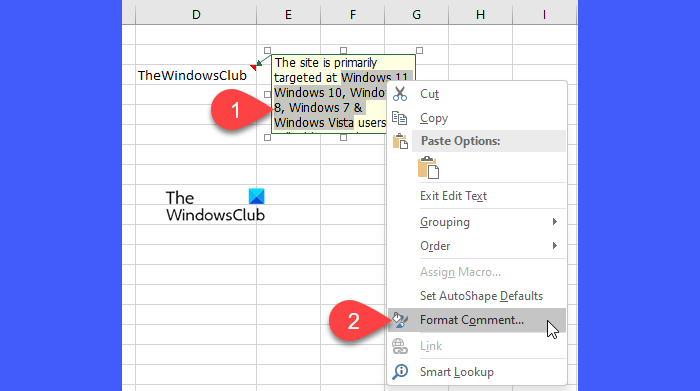
This will open the Format Comment dialogue box. You may now change the font type, font style, and font size of the comment text using the available options. You may also choose to underline the text or change its color from the default black to whatever you prefer. Other effects such as strikethrough, superscript, and subscript are also available, which could be useful in explaining formulas.
You can see the formatting preview side-by-side. Once you’re done, click on the OK button.
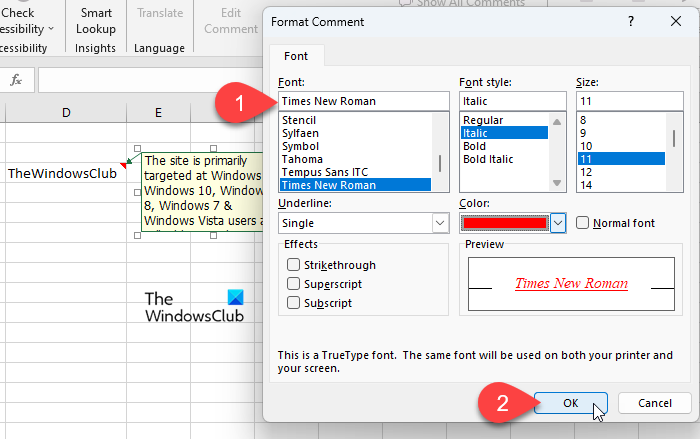
The comment will now appear in the selected font type, color, and style.

To change the background color (or the fill color of a comment box), click anywhere on the border of the comment box and select Format Comment from the right-click menu. This will open the Format Comment window with additional features.
Note: In the below image, we have changed the shape of the comment box. To know how to do this, refer to Section 2].
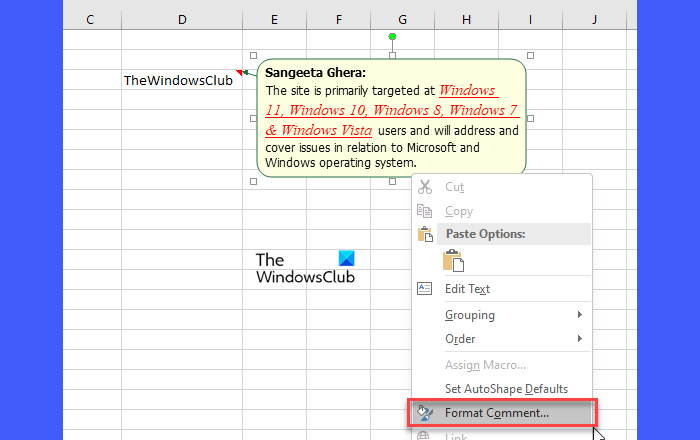
Switch to the Colors and Lines tab. Select a Fill Color and Line Color using the available dropdowns. You may also set the transparency of the fill color or change the line style and weight if required.
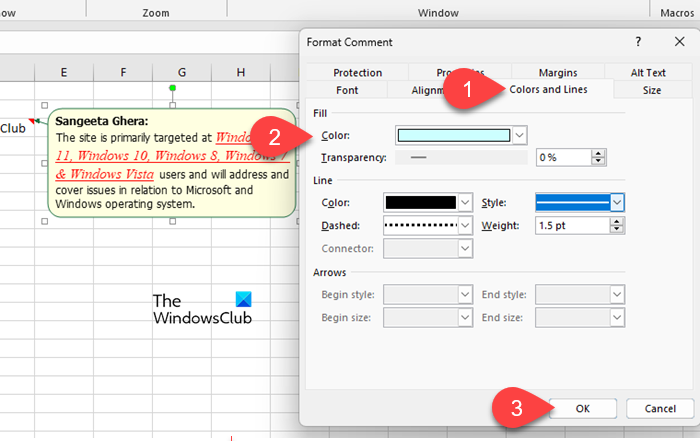
Click on the OK button to finalize changes. The comment will now appear in the selected color and line style.

Right-click on the cell and select Hide Comment to keep the comment hidden until the mouse hovers.
2] Change the default shape of a Comment Box in Excel
If you want to use a different shape for displaying comments instead of the standard rectangle, click on the Customize Quick Access Toolbar icon in the top-left corner of the Excel window (next to the Undo/Redo icons) and select the More Commands option from the menu that appears.
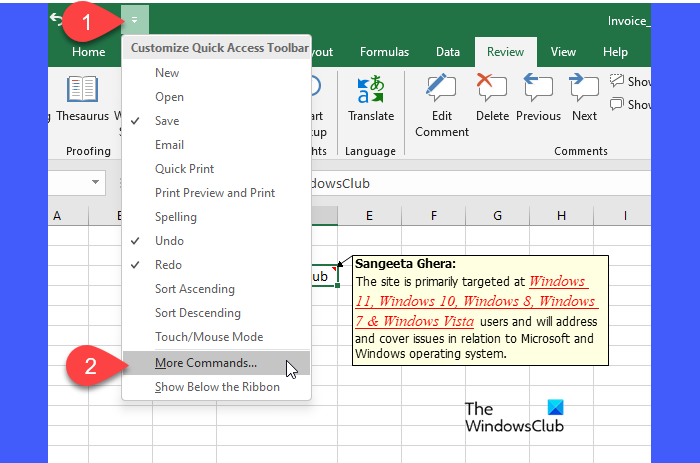
Excel Options window will open up. In the Choose commands from dropdown, select Drawing Tools | Shape Format Tab. Then select Change Shape from the list of options below the dropdown and click on the Add button. The option will move to the right. Click on the OK button.
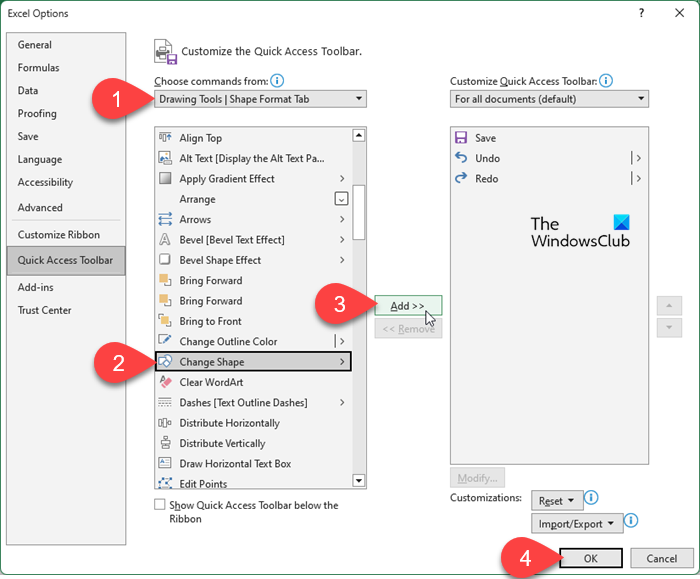
The Change Shape icon will appear before the Customize Quick Access Toolbar icon in the main Excel window, but will be dimmed by default. To activate the icon, click anywhere on the border of the comment box.
![]()
Now click on the icon to see all available shapes to choose from. Click on the desired shape.
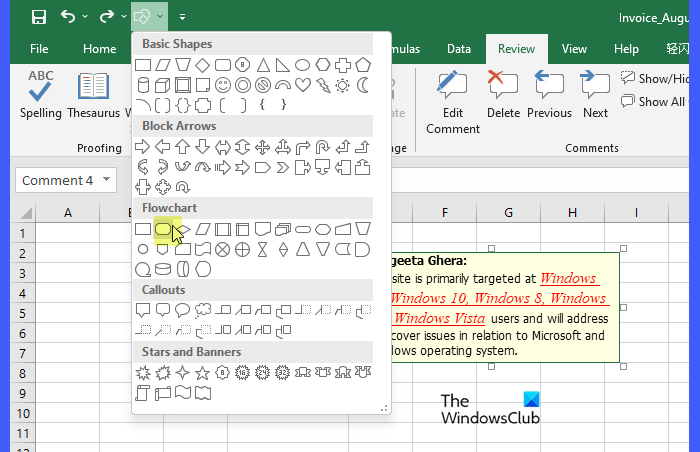
The shape will be applied to the comment.
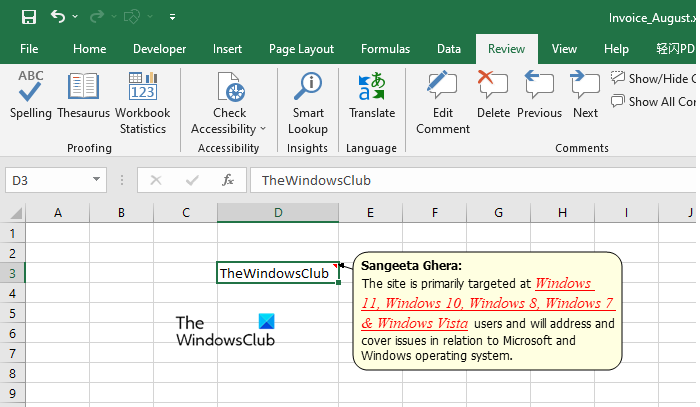
3] Change the user name in a Comment Box in Excel
If you want to change the user name that appears at the beginning of the comment text in bold, you can do that using Excel Options.
Go to File > More > Options. In the Excel Options window, look for the User name field in the Personalise your copy of Microsoft Office section.
Click on the field to replace the default user name with the desired text value. Click on the OK button.
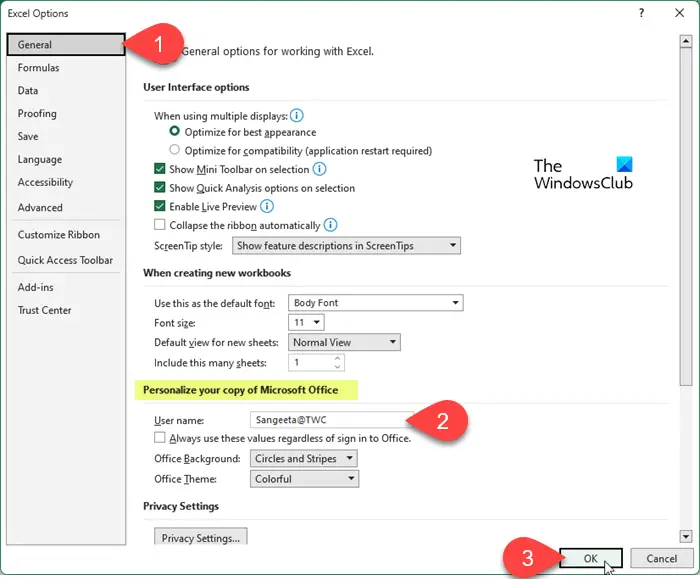
Note: The setting will not replace the user name in the existing comments. You will see the change in the new comments you add in Excel.
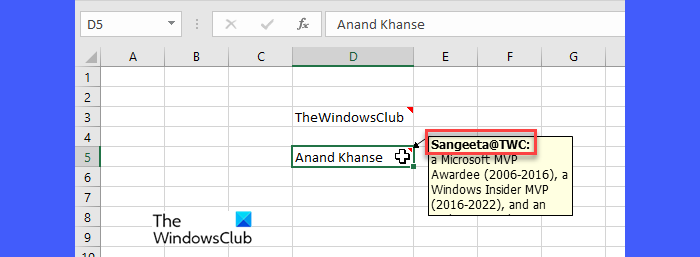
This is all about formatting a Comment Box in Microsoft Excel. I hope you find this useful.
Read: How to insert a picture into a comment in Excel.
How do I change the default size of a comment box in Excel?
To change the default size of a comment box in Excel, select the cell where the comment has been placed. Then right-click and choose Show/ Hide Comments. Click anywhere on the edge of the comment box. Now take the mouse pointer over the little square that appears in the lower-right corner of the comment box. Click and hold the left mouse button and drag the pointer in the desired direction (up/down/left/right) to resize the comment box. Again, right-click on the cell and select Hide Comment.
What is the difference between comments and notes in Excel?
In Excel for Microsoft 365, you have ‘Comments’ and ‘Notes’ as separate features. Notes offer a traditional way of adding comments or annotations to a cell value in Excel. Comments, on the other hand, are used to start a conversation with other users in a collaborative work environment. They are threaded and have a Reply box, whereas Notes do not have a Reply box. They simply add additional information to a cell value for reference purposes.
Read Next: How to change the Color of an Error Indicator in Excel.
Leave a Reply